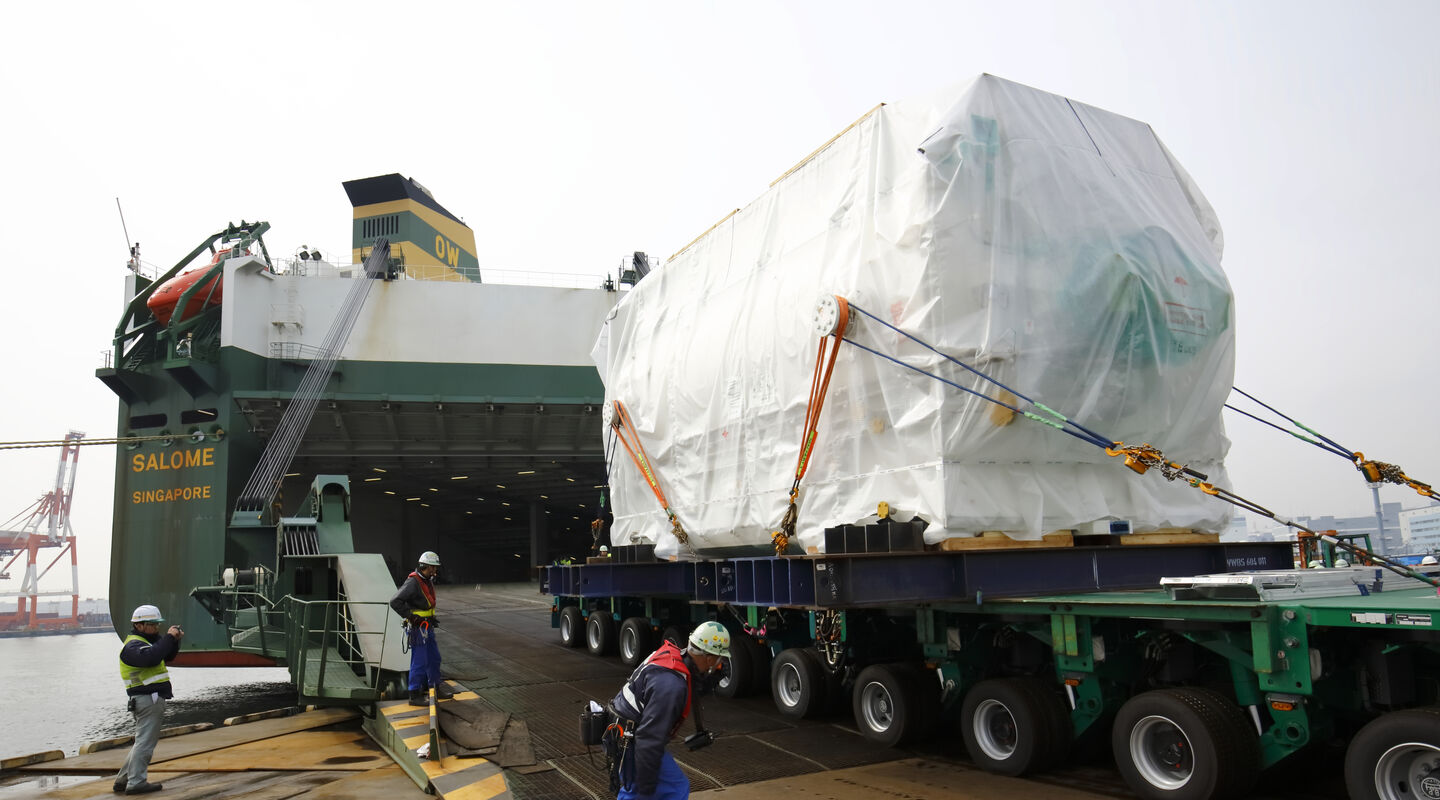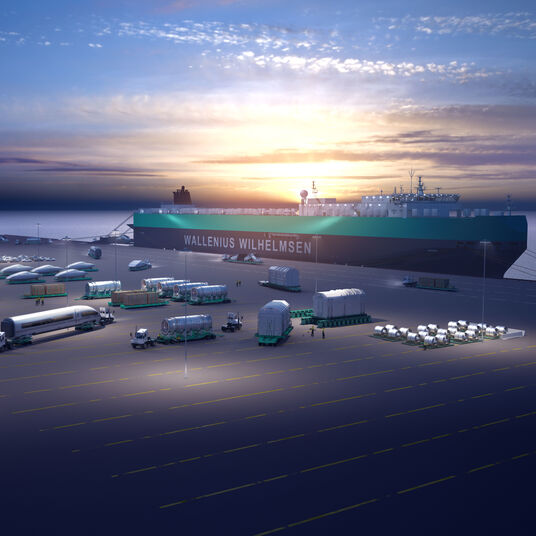Breakbulk shipping: 3 common RoRo myths
The idea that RoRo ocean transport is only good for cars is pretty outdated. RoRo vessels are actually the safest, fastest and most cost-efficient way to transport breakbulk cargo across the world’s oceans. But with myths proliferating, we thought it was time to sort fact from fiction – once and for all.

When it comes to handling high, heavy and long loads, industries as diverse as power, machinery, rail and aviation regularly take advantage of RoRo’s breakbulk shipping capabilities. Why? Because while it’s true that RoRo vessels do transport cars, trucks and rolling equipment, they’re also able to transport so much more. It’s time to dispel some of the most common myths around – and explore why RoRo really is a great shipping option for breakbulk.
Myth one: RoRo vessels can only transport cars
There’s no doubt that cars played an important role in the initial development of RoRo solutions back in the 1960s – but the modern RoRo vessel is capable of carrying a diverse mix of breakbulk, from complex machine tools to heavy power generation equipment and large rail cars.
While cargo such as cars, trucks and buses roll on and off a RoRo vessel on their own wheels, wheel-less breakbulk is loaded and unloaded using handling equipment with wheels.
Myth two: RoRo vessels can’t handle bulky cargo
RoRo’s reputation as a car-carrying service has led even the most experienced logistics professionals to believe that RoRo can’t handle heavy breakbulk. But some RoRo vessels – including many within the WW Ocean fleet – are capable of carrying cargo:
- Up to 6.1 metres high
- Up to 12 metres wide
- Up to 400 tonnes in weight.
A recent success story saw five giant Royal Smit 350-tonne transformers safely shipped from Zeebrugge in Belgium to the US. At Zeebrugge, the transformers were placed on Samson and roll trailers, and rolled onto the two vessels being used for the shipment. With Parsifal’s main deck height of more than seven metres and ramp capacity of 500 tonnes and Faust’s main deck height of 6.5 metres and ramp capacity of 240 tonnes, the vessels were perfectly suited to this type of heavy breakbulk cargo.
Myth three: Container shipping is safer than RoRo
There’s a widely-held belief that cargo will be safer if it’s shipped in a container. But unlike shipping solutions that involve multiple lifting operations and an increased risk of damage, RoRo involves minimal lifting as well as protection from external elements.
The inside of a RoRo vessel works in a similar way to a multi-storey car park, with ramps running between decks. The appropriate deck is selected for cargo depending on its weight and dimensions, and safely secured with lashing to the vessel deck. Once placed and secured on the handling equipment, the cargo is not lifted again during ocean operations.
With RoRo, the process of ensuring a safe shipment starts long before the cargo arrives at the port of load. As well as finding out about cargo dimensions and weights, WW Ocean teams will work closely with customers to develop a clear understanding of cargo properties, such as lashing and lifting points, centres of gravity and footprints.
When it comes to transporting rail cars, railed roll trailers are available in 62-, 72- and 80-foot lengths with capacities from 80 to 100 tonnes. Multi-purpose bogies, a flexible equipment platform suitable for a wide range of different cargo types, can also be used.
Did you know that 2018 saw the heaviest ever Japanese shipment take place on RoRo? That was when a 275-tonne rotor was shipped from the port of Yokohama to Zeebrugge in Belgium – a brilliant demonstration of RoRo’s breakbulk shipping capabilities. And it’s feats like these that demonstrate exactly why RoRo vessels are so much more than just car carriers.


